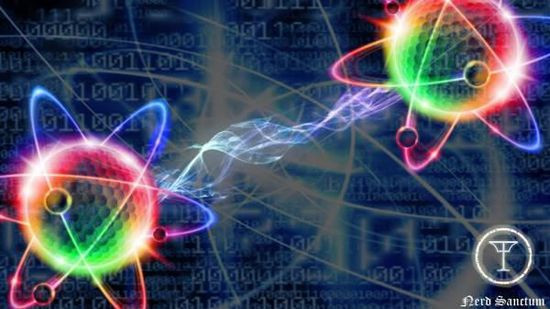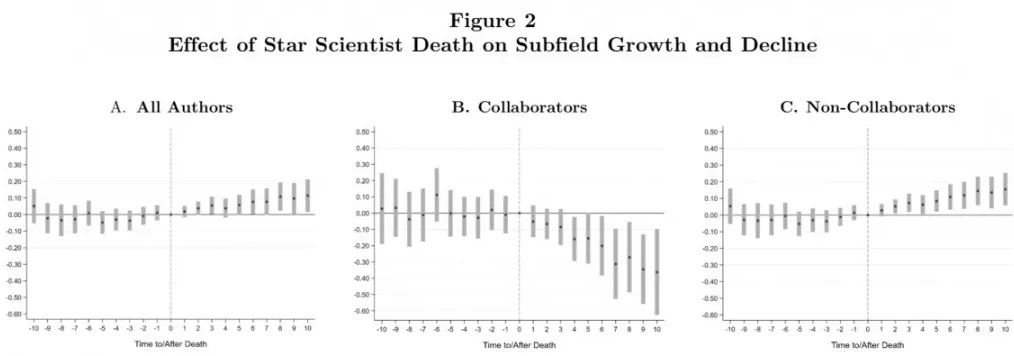30年前人们对量子计算机的想象是,它有潜力能快速精确地完成一些对人类和传统计算机来说不可能的事情。但是一个很大的问题是:微尺度量子效应很容易崩溃,以至于可靠供应能量的计算机一直无法真的实现。
现在,日本的一组科学家或许已经克服了这个障碍。他们用激光开发出一个精确持续的控制技术,其持续维持「量子比特」生命周期的成功率要比之前的技术高上 60 倍,而量子比特是量子计算机编码的基本单元。尤其是这些研究者已经展示出他们能持续创造一个纠缠状态的量子行为——纠缠超过一百万个不同的物理系统。在他们数据存储的调查范围内,这是一个世界记录。
这一成果非常重要,因为纠缠的量子粒子,比如原子、电子和光子,都是量子信息处理的来源,而这些是由微小尺寸下的量子行为创造出来的。利用它们开创了一个崭新的信息技术时代。在叠加和纠缠这些行为中,量子粒子能同时处理巨量的计算任务。他们的研究报告发表在本周的 APL Photonics 期刊上。
「在量子信息处理中,量子比特的生命周期有一个问题。我们已经解决了这个问题,而且我们能在我们想要的任何时间段内持续进行量子信息处理,」东京大学工程学院应用物理系的 Akira Furusawa 解释道,他是该项研究的领导人。
「这一成果最困难的地方是被压缩(squeezed)的光束之间的连续相位锁定,但是我们已经解决了这个问题。」基于集成电路和硅芯片的计算机是当下主导的信息处理技术,而量子计算机被认为继它们之后的下一代计算。目前计算机使用一长串的 0 和 1,也被称为 bit,来处理信息。相比之下,量子计算机通过利用量子力学的强大力量,能编码在量子状态下被称为量子比特的 0 和 1。量子比特有两种不寻常的配置方式:「叠加」和「纠缠」。
量子系统可以同时以好几种状态存在,比如衰变和未衰变两种状态的叠加。粒子也表现出纠缠的量子行为,这是量子之间的亲密性质,能将它们完美地结合在一个共同的存在中,即使它们之间的距离非常远。用爱因斯坦的话说,就是鬼魅。
接下来在迈向量子计算粒子的道路上,Furusawa 设想要创建二维和三维的晶格状的纠缠状态。「这将会使我们实现拓扑量子计算,一种非常强大的量子计算,」他说。
In recent quantum optical continuous-variable experiments, the number of fully inseparable light modes has drastically increased by introducing a multiplexing scheme either in the time domain or in the frequency domain. Here, modifying the time-domain multiplexing experiment reported in the work of Yokoyama et al. [Nat. Photonics 7, 982(2013)], we demonstrate the successive generation of fully inseparable light modes for more than one million modes. The resulting multi-mode state is useful as a dual-rail continuous variable cluster state. We circumvent the previous problem of optical phase drifts, which has limited the number of fully inseparable light modes to around ten thousands, by continuous feedback control of the optical system.
Keywords- multiplexing,
- optical feedback,
- quantum optics
Quantum entanglement, which is often counterintuitive and was originally questioned by Einstein, Podolsky, and Rosen(EPR),1 is now recognized as a versatile resource for quantum information protocols.2,3 In order to meet various requirements for various applications, an important technological development is to increase the number of available entangled qubits. In particular, measurement-based quantum computation(MBQC)requires the cluster type of large-scale entangled state,4,5 where individual components of the cluster state must be accessible by measuring devices. The number of entangled qubits with individual accessibility seems to be currently limited to a moderate scale.6–8
Shifting to the continuous variable(CV)counterpart,9,10 recently the number of fully inseparable qumodes of light fields drastically increased by introducing multiplexing either in the time domain11–13 or in the frequency domain.14–17 The successes of the CV approach are based on the deterministic nature of field-quadrature squeezing. This is a strong advantage over the photonic qubit-based approach, where photons or photons pairs are generated with low probabilities and rare success events are postselected.8,18 On the flip side, the disadvantage of the CV MBQC has been considered as finite squeezing in resource cluster states, which results in accumulation of noises during computation.19 However, there has still been a possibility of a special encoding which can circumvent this problem, and indeed, a fault-tolerant threshold corresponding to about −20.5 dB of squeezing is recently proven by Menicucci20 for the Gottesman-Kitaev-Preskill(GKP)type of encoding.21 Although the threshold of the squeezing levels is still unreached, it is good news that CV cluster states with finite squeezing can be a sufficient resource for quantum computation.
The multiplexing allows many qumodes to be assigned to a single beam, which drastically reduces complexity and physical size of the optical system from the conventional implementation assigning a single qumode to a single optical beam.22–26 Although both of the time-domain multiplexing and the frequency-domain multiplexing would be important developmental directions, the time-domain multiplexing is advantageous because of time translation symmetry. With the time-domain multiplexing, a cluster state of qumodes can be an arbitrarily long chain in the longitudinal direction by extending the operating time of the cluster-state generator.
In spite of the in-principle unlimitation of the time-domain-multiplexing, the previous experimental demonstration of a dual-rail CV cluster state was limited in the number of qumodes,13 due to a technical reason as follows. The optical setup is a large Mach-Zehnder interferometer as depicted in Fig. 1, including a long optical delay line for a shift of qumodes on a rail. The mathematical derivation of the cluster state with this setup is contained in Sec. S1 of the supplementary material. In order to operate this cluster-state generator, the relative phases at all interference points must be properly locked. For this purpose, modulated bright beams are injected into the optical paths of the cluster state as phase probes, and their classical interference signals are exploited as error signals for the feedback control. However, the modulated bright beams are noisy, which obscures objective quantum-level correlation signals of the cluster state. The noises were circumvented in the previous demonstration by chopping the bright beams and by detecting the cluster state when the bright beams are absent. Due to the above previous situation, the optical system was uncontrollable during the cluster-state generation. Phase drifts gradually accumulated and quantum correlations gradually degraded at the rear part of the cluster state. Finally, the full-inseparability criterion27 became unsatisfied after the creation of around 16 000 qumodes within 1.3 ms.13
Click to view
Schematic of the optical setup to generate a dual-rail CV cluster state multiplexed in the time domain. Accompanied is a graph image of the quantum state at each stage, where qumodes are represented by nodes and their correlations are represented by edges. Edge colors in(iv)distinguish positive and negative correlations, as explained in Sec. S1 of the supplementary material.12
Here we demonstrate a new time-domain-multiplexing experiment, where a dual-rail CV cluster state with full inseparability is deterministically generated without limitation in the number of qumodes. The previous limitation explained above is removed by continuing the feedback control during the generation of a cluster state. Instead, the noises of the modulated bright beams are eliminated electrically after homodyne detections. The resulting effective squeezing levels are −4.3 dB, which are not as high as −5.0 dB for the first thousands of qumodes in the previous demonstration,13 but in contrast the initial squeezing levels continue without degradation. The squeezing levels are sufficiently higher than −3.0 dB of the full-inseparability criterion.13,27 In principle, there is no limitation in the number of fully inseparable qumodes. We test the full inseparability of about 1.2 × 106 qumodes, which are generated within 100 ms. The reason why we stop at about 1.2 × 106 qumodes is simply the data size for verification. In order to estimate the effective squeezing levels, we repeatedly acquire homodyne signals of the 1.2 × 106 qumodes, by which the data size reaches 100 GB.
In Sec. II, we summarize theories regarding quantum correlations in the dual-rail CV cluster state, full inseparability criterion, and longitudinal mode functions. In Sec. III, we describe experimental methods. In Sec. IV, we show experimental results and make discussions. In Sec. V, we summarize our results. For self-containedness, in Sec. S1 of the supplementary material, we describe derivation of the quantum correlations in the dual-rail CV cluster state for an ideal case, and in Sec. S2 of the supplementary material, we describe derivation of inequalities for full inseparability.



















